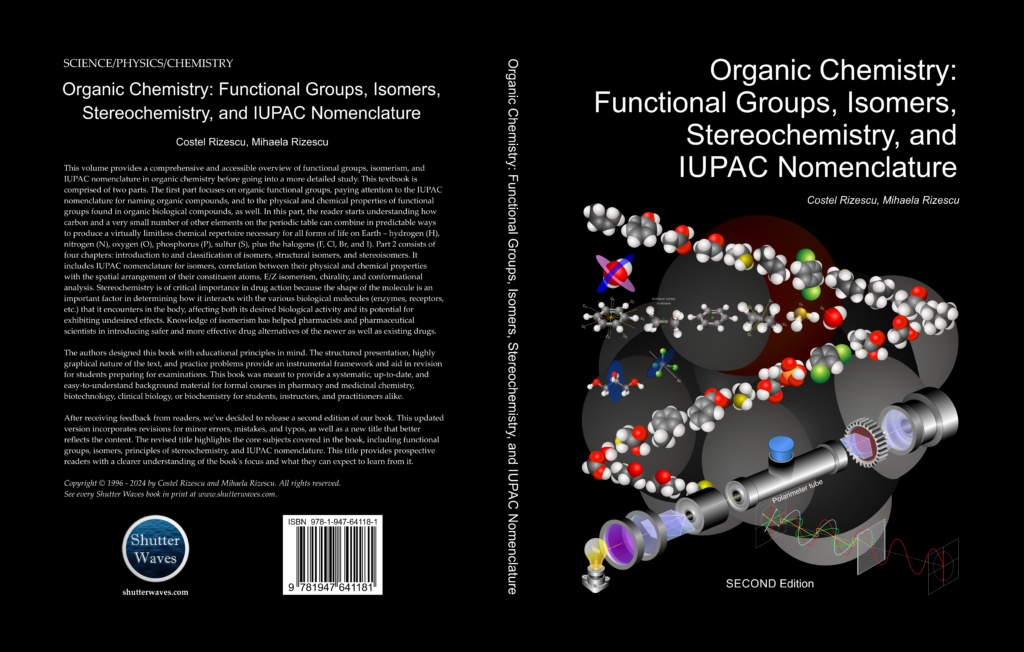A New Book on the Chemistry of Functional Groups and Isomers just released!
In organic chemistry, functional groups are the key to understanding the reactivity and properties of organic molecules. The book delves into each functional group, explaining their role in chemical reactions, as well as their significance in determining molecular properties.
Isomers are compounds with the same molecular formula but different structural arrangements, leading to significant differences in physical and chemical properties. Structural isomers vary in the connectivity of atoms, whereas stereoisomers maintain the same connectivity but differ in spatial arrangement. An in-depth exploration of these types, including chain, position, and functional group isomers, followed by stereoisomers such as enantiomers and diastereomers, reveals the profound impact isomerism has on organic compounds.
Stereochemistry focuses on the 3D arrangement of atoms in molecules, which becomes critical in understanding the behavior of molecules in biological systems. This section will guide you through the concepts of chirality, optical activity, and the R/S nomenclature, helping you visualize stereoisomers in three-dimensional space, and appreciate their significance in drug design and enzyme-substrate interactions.
Nomenclature in organic chemistry is essential for the clear and systematic naming of compounds. The International Union of Pure and Applied Chemistry (IUPAC) provides the rules that allow chemists to translate molecular structures into names. This edition introduces the updated rules for naming alkanes, alkenes, alkynes, and functional groups, along with step-by-step instructions to ensure clarity and accuracy in chemical communication. The guide is structured to help students approach complex molecules and confidently name them using IUPAC principles.
After receiving feedback from readers, we’ve decided to release a second edition of this book. This second edition incorporates revisions for minor errors, mistakes, and typos, as well as a new title that better reflects the content. The revised title highlights the core subjects covered in the book. This title provides prospective readers with a clearer understanding of the book’s focus and what they can expect to learn from it.


Comments